Remineralizing a Tree Farm – Growing Nuts for the Revolution!
Our Question
What does it mean to have an environmental footprint that regenerates the earth’s ecosystems instead of degrading them? How can human beings once again live in concert with the earth, as fully participating members of the earth’s diverse biota, enjoying rich lives in community with other beings?
With the forest as our teacher, we are setting out to discover what this might mean in our post-colonial age. Using the principles of perennial agroforestry and regenerative agriculture, we are recreating a diverse ecological habitat; a place where we can live and grow food, as well as enhance the fertility of the soil, recharge the aquifers, and sequester carbon from the atmosphere.
We are a nut farm. And we are a living, breathing habitat, abundant with food and color, medicine and music. We are living in the world as it is, and as we yearn for it to become. We want our community (near and far) to benefit from what we are doing here, as much as we want to root into a way of living that is collaborative, uncompromising, sufficient, and whole. This is our response to the world; in, of and through the world.
Our Vision
Nutwood Farm is (will be) an abundant, diverse ecological habitat intentionally stewarded to provide a wide array of edible nuts, fruits, grains, and medicine for our regional foodshed. Our work is to inspire deeper changes in how we relate to food and the socio-ecological systems we partake in, demonstrating the principles of regenerative agriculture, strengthening community food sovereignty and economic sufficiency, and embodying appropriate human relationship with the earth.
We endeavor to become the first small commercial nut farm in Massachusetts, growing hazelnuts, chestnuts, walnuts, butternuts, and stone pines. As the hedgerow plantings mature atop our contour berms, inter-plantings of edible shrubs, berries, and medicinal understory herbs will blanket our field with habitat and food. Rice paddies, fruit trees, and small vegetable and herb gardens will round out the diversity of our homestead, along with beehives, a small herd of sheep and some amorous ducks. Greenhouses attached to the south face of our passive solar timber frame strawbale home will continue the abundance of production year-round where more exotic herbs, fruits, and spices will thrive. Our vibrant and reciprocal community will complete our vision of a thriving local farm in a place we honor and care for that gives meaning to our lives.
We welcome all to join us in this motley adventure and manifest vision- we will happily offer our knowledge, experiences and mistakes along the way as we explore a lifetime of relationship with the human and ecological landscapes we are embedded in.
Our Story
Our ideas and skills were planted in us over many years and decades of gathering and learning. We came to this land – seven acres on a beautiful hillside in Cummington – in the summer of 2015, already with ambitions to become ecological nut farmers, as well as to build a highly original dwelling that would integrate us more fully into our ecosystem. We spent the fall and winter in a frenzy of field reclamation, clearing the new forest regrowth and chipping our massive piles of brush. In the spring of 2015, with the help of many hands, we dug eleven swales on contour over the gentle westward sloping field. We planted 225 hazelnut shrubs in four long hugel berm hedgerows along with edible nitrogen fixing shrubs. We also planted a “nut wood” of American chestnuts, English walnuts, Chinese chestnuts, hardy pecans, and native butternuts on seven additional hugel berms above the hazelnuts.
This spring we will dig two more contour swales and plant another 200 hazelnuts. Our goal is to create a diverse polyculture of nut trees, shrubs, berries, grains, pasture, and understory medicinals on our “marginal” seven-acre property. Our soil building practices, including earthworks, ponds, compost teas and foliar sprays, are the heart of our plans to regenerate this land into a highly productive food forest. And our future home will put us in the midst of it all, allowing us to fully inhabit this place and understand what it means to be alive on this tiny patch of earth.
Remineralization
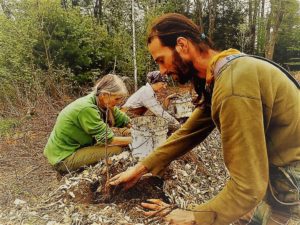
Kalyan, his mother Anjee, and Sara planting hybrid hazelnut shrubs with rock dust enhanced compost and a mycorrhyzal innoculent into mulched earthen berms on contour.
We first heard about remineralization at a Bionutrient Food Association conference in 2013. We see native rock dust applications along with intensive biological soil building as essential to a holistic and regenerative agricultural movement. We are taking a whole-systems approach and closing as many loops as we can, using perennial agriculture as a means of healing the rift between humans and ecology. We want to emphasize the importance of soil health in elevating the quality and nutrition in our food and undoing the damage that non-stop tillage and chemical warfare has wrought on our lands and waters. To us, growing soil is the primary focus of our farm, and we are doing it through earthworks, edible hedgerows, no-till alley cropping, and growing delicious perennial edible fruit and nut trees.
What we are building here will take a few years to come to real fruition. As we go about our process of digging our swales on contour and mounding up the soil into a high berm to be mulched with wood chips and planted with trees we are mixing compost and rock dust for use as a top dressing for the trees. As the trees grow we will keep the alley ways between them open and plant seed grass and clover, later to be grazed by sheep and cut with a scythe for hay. By establishing perennial ground cover on the whole property we won’t worry about erosion and the perennial root systems bring micronutrients from the deeper soils. In addition we will also be doing periodic applications of rock dust, initially from our own pile left over from the drilling of our well last summer, and later from other sources to diversify the available micronutrient spectrum.
Last June we drilled a well 280 feet deep and collected the rock dust from the drilling on site. The geology in our area is mainly carbonaceous schist and quartz schist (Goshen formation) (Cummingtonite, a mineral discovered here in 1812 is a Magnesium Iron Silicate Hydroxide, found here in mica-slate; rhodonite, or manganese spar, in masses; and white pyrites and garnets.) We have primarily mixed it into the native topsoil and compost under the mulched trees. We have been applying approximately 1 pint of rock as per wheelbarrow of compost. We first started applying it in May of 2016. We have also applied a 50 pound bag of Brix Blend from Rock Dust Local and we hope to apply more of this product in the future. We have not yet taken baseline measurements of our soils.
The Project
We need your help to raise the keystone structure of our farm: a multi-functional barn and greenhouse that will serve as a cultivation space, a tool shed, a solar photovoltaic (PV) mount, and a place to dry, cure, and store our nuts. This barn will be central to our nut farming operation and beautifully integrated into our future homestead.
I. Cultivation space
The southern half of the barn will be sheathed in polycarbonate twin-wall, a durable greenhouse covering that is stronger than glass and more UV resistant than plastic film. Rich garden beds along the wall will give us ample space to cultivate cold-sensitive plants like ginger and sweet potatoes, as well as space for seedlings and cuttings when we begin propagating our own perennial nursery stock. A row of barrels down the center of the barn will help maintain the temperature inside on cool nights while also providing a water source for drip irrigation lines. Behind them a shade cloth will divide the barn space by its two main functions.
2. Dry storage
The northern half of the barn will be extremely well-ventilated (not to mention rodent proof) with large greenhouse fans at both ends, giving us a warm and well aerated space to dry, sort, cure, and store our autumn nut harvests. The fans will be powered by solar PV and controlled by thermostat for efficiency. Wire mesh tables running the length of the barn will give us plenty of space for spreading, drying and sorting nuts, and crates stacked against the insulated north wall will serve our intermediate curing and storage needs.
3. On-farm energy
On the south-facing ridge of the barn, we will mount a small 1kW solar PV system to absorb maximum sunlight while shading our dry storage work space below. Our entire farm will be off-grid and use minimal electricity once the house is constructed. We will also use the PV system to supply electricity while we build the house, to reduce the need for a gas-powered generator.
4. Toolshed/pavillion/duck coop
Outside the barn on the northern side, we will extend the roof another eight feet to create a multipurpose tool shed, harvest processing, packing and loading space, and potentially a future duck coop as well (given the close proximity to our future pond). Having a sheltered area close to the driveway will facilitate access around the farm and provide a three-season space for a variety of farm activities throughout the year.
All the money we raise through our Barnraiser campaign will go towards developing our farm. Our goal is to raise $12,000 to cover the full cost of constructing our innovative barn. Any additional funds we raise will go towards our future plantings and earthworks projects, digging our pond, rice paddy, and additional swales. Every penny we receive will enable us to reduce our loan payments and bring us that much closer to true economic sufficiency and life-giving abundance.
The Nutmeat
Here is where you get to enjoy the fruits of our labor! In return for your daring, prescient, and spontaneous act of kindness, you will get to directly partake in our adventure, sampling our earliest available nuts, testing our prototypes of value-added products, feasting, visiting, and learning right along with us. We hope you will enjoy becoming enraptured in our plans and joining us in this journey of cultural reclamation and biological regeneration. We need your participation to transform this place from the desecration of neo-colonialism back to the consecration of new agrarianism.
We already have so many people to thank for helping us get this far – now we are casting our webs wide and planting our faith that more good people in the world will see the beauty and recognize the power in what we are doing. Whether you can invest a little or a lot, every bit of it will count immeasurably towards manifesting this lives-long work. We know we are just two people, on just seven acres, in a tiny town in a rural place in a fringe economy. Yet we know we are part of something tremendous. And we believe that our story, and what we have to offer the world, is worth every bit of life we have to give it. But we need your help to tell our story, and to bring it to life.
Sara Tower was born with dirt under her fingernails and has lived on planet earth her entire life. She first got into sustainable farming during a gap-year in Perryville, Arkansas living in agricultural community. After several more seasons of weaving education for social justice and ecological sensibility along with farming internships in Gettysburg and Biglerville, PA she returned to Western Massachusetts to find a home place to dig in. In 2012, she began learning from and working with refugee and immigrant farmers growing food for their families and local markets in Greater Springfield and Worcester, providing technical assistance and co-managing an aggregated community supported agriculture program. She also began submersing herself in locally-abundant expertise and enthusiasm around regenerative agriculture, agroforestry, and permaculture, connecting it to anti-racism and food justice work wherever possible. Her meanderings brought her to the 2014 Northeast Permaculture Convergence in Unity, Maine, where she met Kalyan…
Kalyan Uprichard is a collector of skills and a dreamer, looking for ways to live lighter on this planet. With a very alternative upbringing focused on food and spirituality, Kalyan embodies a desire to give all things (not just people but all things) the respect that life deserves. His thirst to holistically understand the world and its people has accompanied him throughout his life and the many different places he has lived and traveled. In previous incarnations, Kalyan has worked as a carpenter, massage therapist, cook, and arborist, among others, choosing to be schooled through life experience rather than books or experts. The Hilltowns of Western Massachusetts have been long been his grounding place and it is a pleasure to finally come home to Cummington with Sara.
Support us on Patreon
Thank you for joining us today! Please become a member of RTE and support us on Patreon. Unlike many larger organizations, we work with a team of determined and passionate volunteers to get our message out. We aim to continue to increase the awareness of remineralization to initiate projects across the globe that remineralize soils, grow nutrient dense food, regenerate our forests’ and stabilize the climate – with your help! If you can, please support us on a monthly basis from just $2, rest assured that you are making a big impact every single month in support of our mission. Thank you!

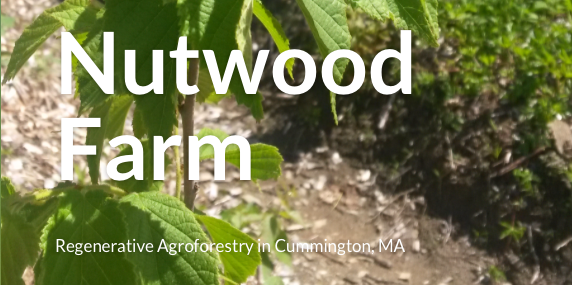
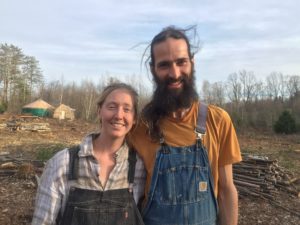
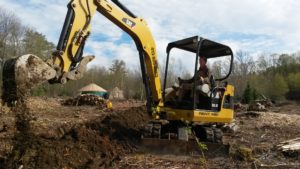
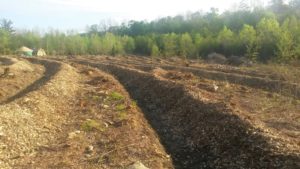
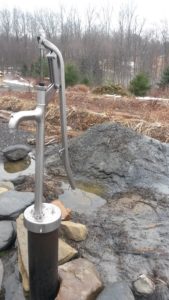
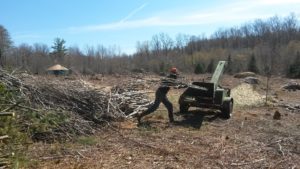
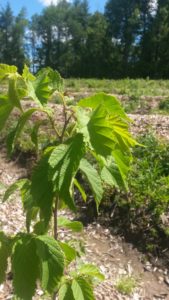

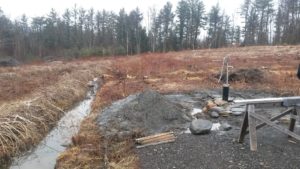






Jennifer
May 25, 2017 (3:14 pm)
Hey there,
Your project is inspiring!
I found your site because I was looking for information on using rock dust from well drilling.
We just drilled a well and are contemplating our rock dust for use in our gardens. Do you have any concerns about about drilling lubricants or anything else that might have ended up mixed with the rock dust from the drilling process?
Thanks for your thoughts!
Best Wishes!
Joanna Campe
September 27, 2017 (7:51 pm)
We normally advocate mineral fines that are not part of a drilling process, but a byproduct of the aggregate industry. Download the rock dust primer to get started!